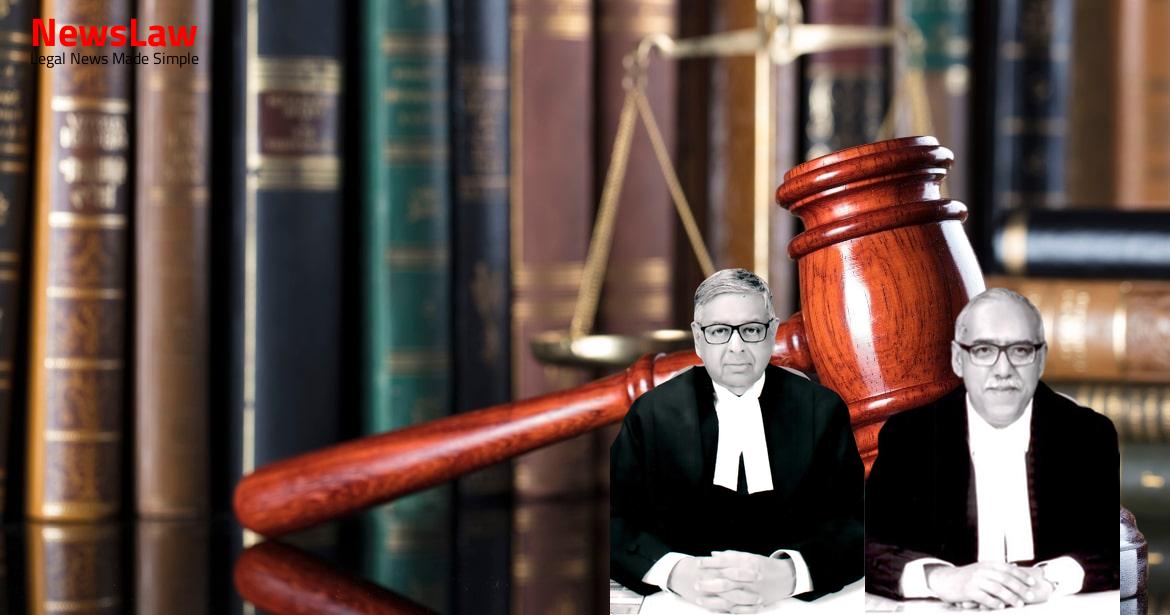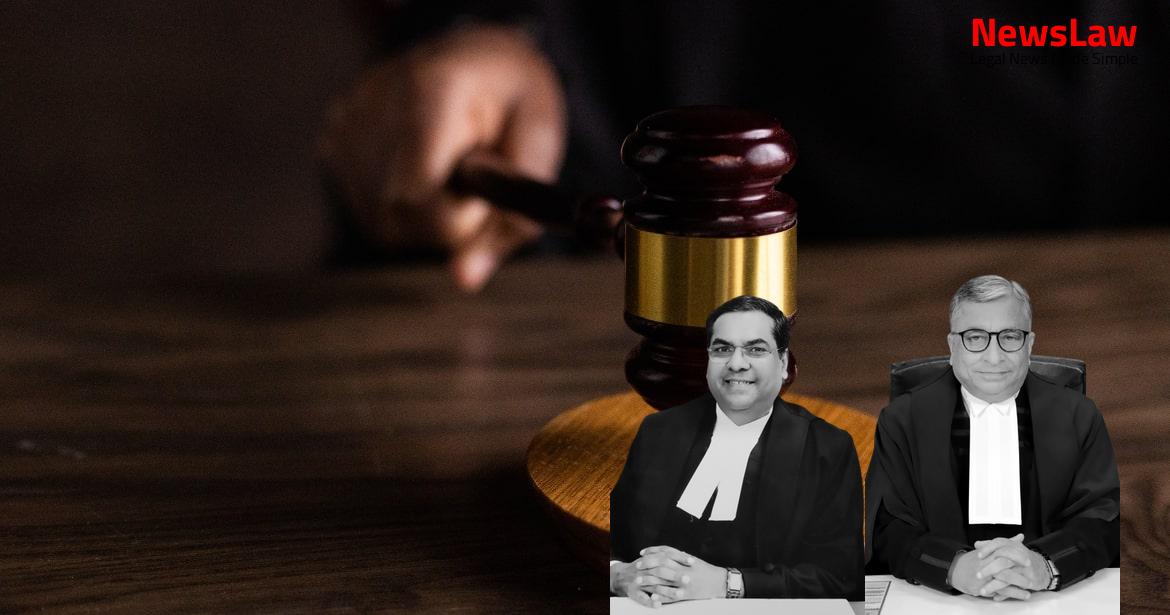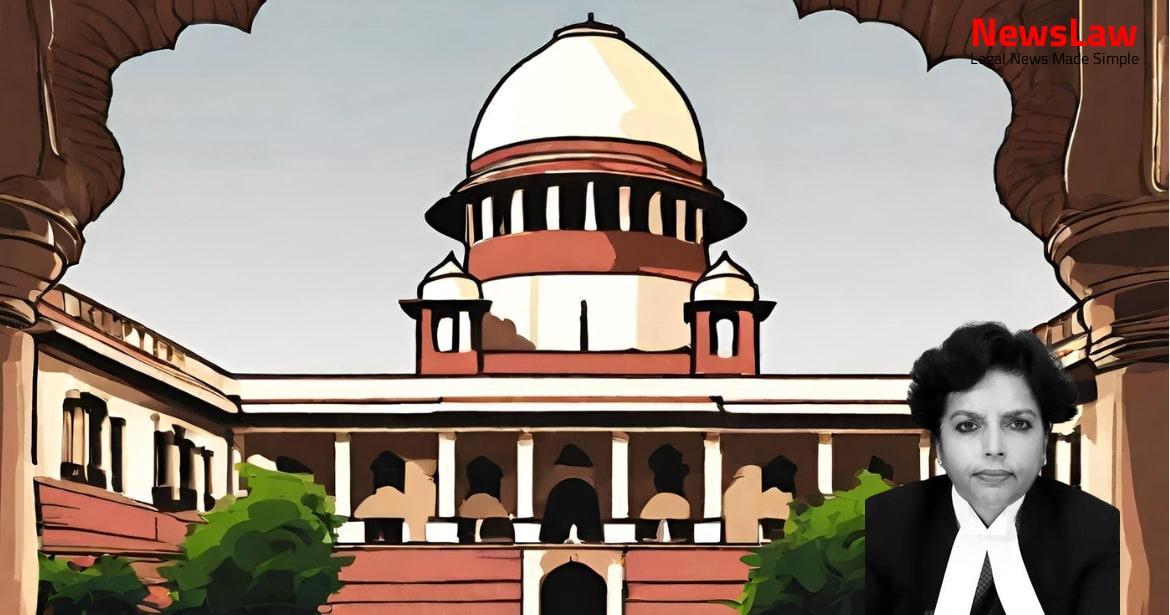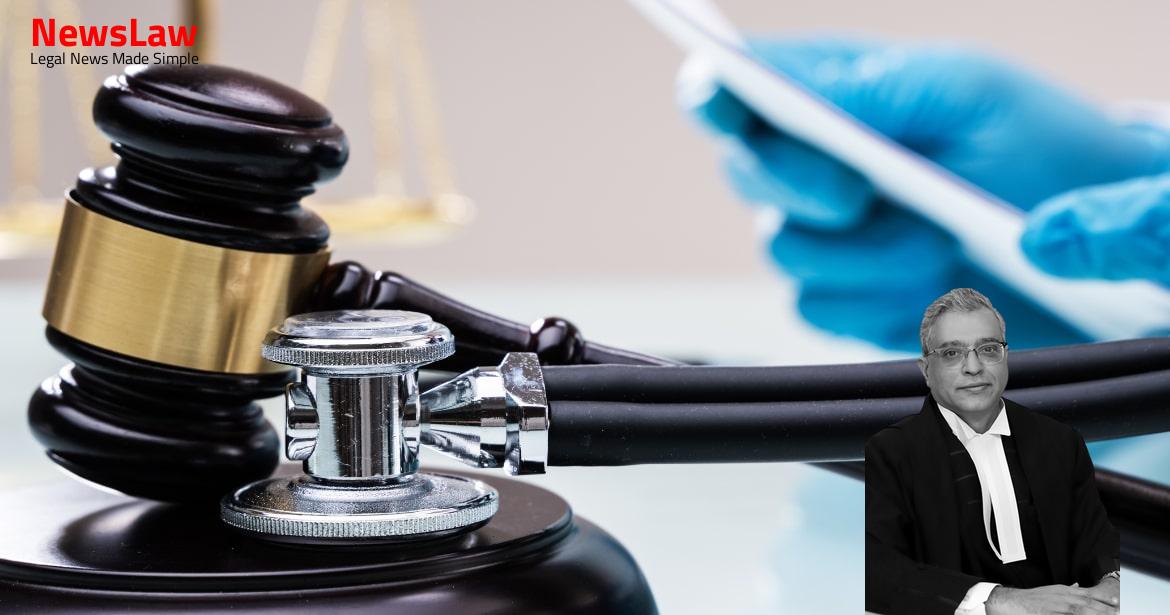In a recent legal case, the court conducted a comprehensive analysis of charges related to unlawful assembly. The court’s focus on the legal aspects of the case shed light on the intricacies of proving a common object in such scenarios. This landmark decision sets a precedent for future cases involving similar charges. The in-depth legal analysis provided by the court highlights the significance of crucial legal principles in cases of unlawful assembly.
Facts
- Division Bench reversed judgment of acquittal passed on 29 April, 1987
- Appellants sentenced to undergo rigorous imprisonment for 10 years and pay fine of Rs. 5000/- each
- Both appeals directed against judgment of conviction on 5 February, 2009
- Appellants found guilty of offences under Part-I of Section 304 read with Section 149 of the Indian Penal Code and under Section 148 thereof
- Appellants in Criminal Appeal No.1431 of 2013: Dilip Shaw @ Sanatan and Uttam Shaw
- Appellants in Criminal Appeal No 1430/2013: Paresh Shaw @ Parash, Gopal Prosad Sarkar @ Phatik and Mohd. Kayum Khan
- In default of payment of fine, further rigorous imprisonment for a period of one year directed
- High Court did not award any sentence for offences other than Part-I of Section 304 read with Section 149 considering them as lesser offences
- Paresh and Gopal found guilty under Section 9-B (2) of the Explosives Act, 1884
- The First Information Report was based on the statement given by Piyara Singh, a family member and eyewitness.
- Gurdev’s statement was treated as a dying declaration by the Division Bench.
- Suresh and Tirath Dev Singh were witnesses of fact but not family members.
- A total of 22 witnesses were examined by the prosecution.
- Apart from the five appellants, Nageswar Sharma, Bhutnath, Uttam, Bhagat, and Hadis were also named in Piyara Singh’s statement in connection with the incident.
- The accused were charged under various sections of the Code.
- Dr. Dipen Kumar Biswas was the autopsy surgeon.
- Gurdev informed the doctor that he was assaulted by Nageswar Sharma.
- The appellants were provided with certified copies of the judgment.
- The injured were taken to Howrah General Hospital by an ambulance.
- The copy of the judgment by the Division Bench was annexed to the State’s affidavit.
- Several individuals were injured in the bomb explosion, leading to Gurdev’s death.
- Remnants of the bomb were found at the scene by police witnesses.
- Sakaldeo Singh, a head constable, assisted in arranging medical treatment for the injured.
- An examination of various witnesses of fact was conducted during the case.
Also Read: Legal Analysis: Ownership Dispute and Validity of Will Deed
Arguments
- Accused intended to teach a lesson to members of complainant party, not to kill
- Bombs were thrown with knowledge they could cause death, but not with intention to cause death as no one was targeted victim
- Evidence of family feud between complainant party and accused Nageswar
- High Court negated defence, as accused did not intend to kill anyone specific from complainant party
- Accused did not defend Trial Court’s judgment on facts before High Court
- High Court acknowledged that the accused did not target a specific victim
Also Read: Analysis of Curative Jurisdiction in Legal Dispute
Analysis
- The prosecution witnesses narrated the sequence of events uniformly, supporting the prosecution’s case.
- The Trial Court found the reasons for acquittal to be flawed, and the High Court rightfully interfered in the appeal.
- The assault on Sarban was followed by the hurling of bombs, leading to Gurdev’s injuries and eventual death.
- The witnesses identified the accused persons’ involvement in the initial assault and the later bomb attacks.
- There were no major contradictions in the prosecution witnesses’ depositions, strengthening the case against the accused.
- The Trial Court’s judgment was largely inferential, while the High Court’s intervention was based on substantial evidence.
- Common object to assault was established, especially with the presence of lethal weapons and active participation of the accused.
- The culpability of the appellants under Section 304 Part I of the IPC read with Section 149 IPC was justified based on the evidence.
- The witnesses’ consistent narrations and the medical evidence supported the prosecution’s version of events.
- The appellants’ actions reflected a shared motive and common intent, leading to their conviction under relevant sections of the IPC.
- The prosecution was unable to specify the common object for which the accused formed the assembly
- The decision of the Court in the case of Sukhbir Singh highlighted the importance of establishing the common object in cases of unlawful assembly
- The High Court should not interfere lightly with the Trial Court’s decision in an appeal against acquittal
- Reliance was placed on various cases to argue against the applicability of Section 149 of the Code to the appellants
- Previous cases like Radha Mohan Singh v. State of U.P., Sukhbir Singh v. State of Haryana, and Bal Mukund Sharma v. State of Bihar showed that the common object of the accused was not proven in cases of unlawful assembly
- The appellants committed the offences about four decades ago and are currently of advanced age.
- No intention could be attributed to the appellants to cause the death of Gurdev based on the manner in which the assault took place.
- The appellants cannot be held guilty under Part I of Section 304 of the Code read with Section 149 due to the random nature of the assaults.
- The finding of guilt by the High Court under Section 148 of the Code is not interfered with for all appellants.
- Appellant Nos. 1 and 2 in Criminal Appeal No.1430/2013 are guilty under Section 9B (2) of the Explosives Act 1884.
- The bombs were charged from the rear of the group but were not targeted at anyone specific.
Also Read: Contractual Interpretation in Real Estate Dispute
Decision
- The quantum of fine is enhanced to Rs.50,000/- for each of the appellants.
- The conviction imposed on the appellants is modified to Part II of Section 304 of the Code with Section 149 thereof.
- The High Court’s decision not to award separate punishments to the appellants under different sections is approved.
- The appeals are partly allowed with the specified modifications.
- Bail bonds of the appellants are to be cancelled, and they are directed to surrender before the Trial Court within six weeks.
- In case of failure to surrender, the Trial Court will take them into custody to serve the directed sentence.
- The default punishment term is reduced to six months of rigorous imprisonment from one year as directed by the High Court.
- The appellants are directed to undergo five years of rigorous imprisonment each under Part II of Section 304 with Section 149 of the Code.
- Any detention already undergone by the appellants in the same case will be adjusted in the period of sentence.
- The fine amount is to be paid to the legal representatives of deceased Gurdev Singh as compensation.
Case Title: DILIP SHAW .@ SANATAN Vs. THE STATE OF WEST BENGAL (2020 INSC 240)
Case Number: Crl.A. No.-001431-001431 / 2013



